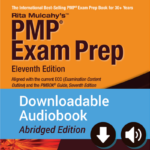Agile Risk Management
This article outlines a few practical tools that can be used to start improving risk management approaches. All three of these actions can deliver business value and when there is a shared framework for decision making projects are more successful.
Some tools that can be used to help make better decisions around risk management on agile projects include; Risk Adjusted Backlog, Risk Profile Graph and Risk Retrospectives.
Risk Adjusted Backlog
Working with Product Owners or business representatives to add threat avoidance and mitigation work along with opportunity enablement work into the backlog.We need a way to insert risk avoidance & mitigation, and opportunity stories into the backlog. It is done by the product owner, but with consultation and guidance of the development team.
By avoiding and reducing risks closer to their identification, the horizon of risk the project is exposed to shortens. By making changes earlier in the lifecycle, the cost of changes are reduced. On the flip side, capitalizing on opportunities is like getting investments done early; they have longer to accumulate. These are the compounding benefits of early and rapid risk & opportunity management.
Getting the risk response actions into the backlog is how these tasks are scheduled and undertaken. We want to make sure that all our risk management work is not supplemental to the project plan, but baked right in. All too often, risk management is an activity done upfront or alongside the project, but never really integrated into the day to day activities of the project. By inserting these new stories into the backlog, we drive risk management actions from the analysis to action.
Risk Profile Graph
Visualizing and communicating overall project risks, trends and impacts of risk management strategies.
Risk profile graphs (sometimes called risk burn-down graphs) are a great way of showing the project’s cumulative risk position and trends over time. They are stacked area graphs of risk severity that allow trends, along with new and escalating risks to be easily identified.
Risk Retrospectives
Periodic team reviews of the project risks and risk management process.
Risk Retrospectives are periodic reviews of the risk and opportunity log along with assessments of the risk management processes being used on the project. Just as we review the evolving product and team processes throughout the project, so should we be evaluating the effectiveness of the risk management plan and processes being used by the team.
Summary
These are just some example tools, not the recommended set to use on every single project. Your approach should vary based on your project and organizational factors. The risk management approach for a large military project would most likely be inappropriate for a commercial, in-house project and vice versa.
Risk management, like estimation, should not be just a project management activity. We can greatly raise a project team’s ability to manage risk–and therefore avoid project failures through socialization, collaboration and practice. If nothing else, these team activities make the basics of risk management more accessible to a larger pool of project stakeholders, and in doing so provide more eyes to find and avoid risks before they can impact the project—which, at the end of the day, is the heart of effective risk management.
Browse RMC eLearning courses, books and other risk management materials available in our store.
- Today’s Project Manager: 9 Tips For Effective Project Management in 2020 - April 28, 2020
- Agile Risk Management - June 10, 2019
- PMI-ACP® Credential – What you Need to Know for Certification - July 5, 2018






